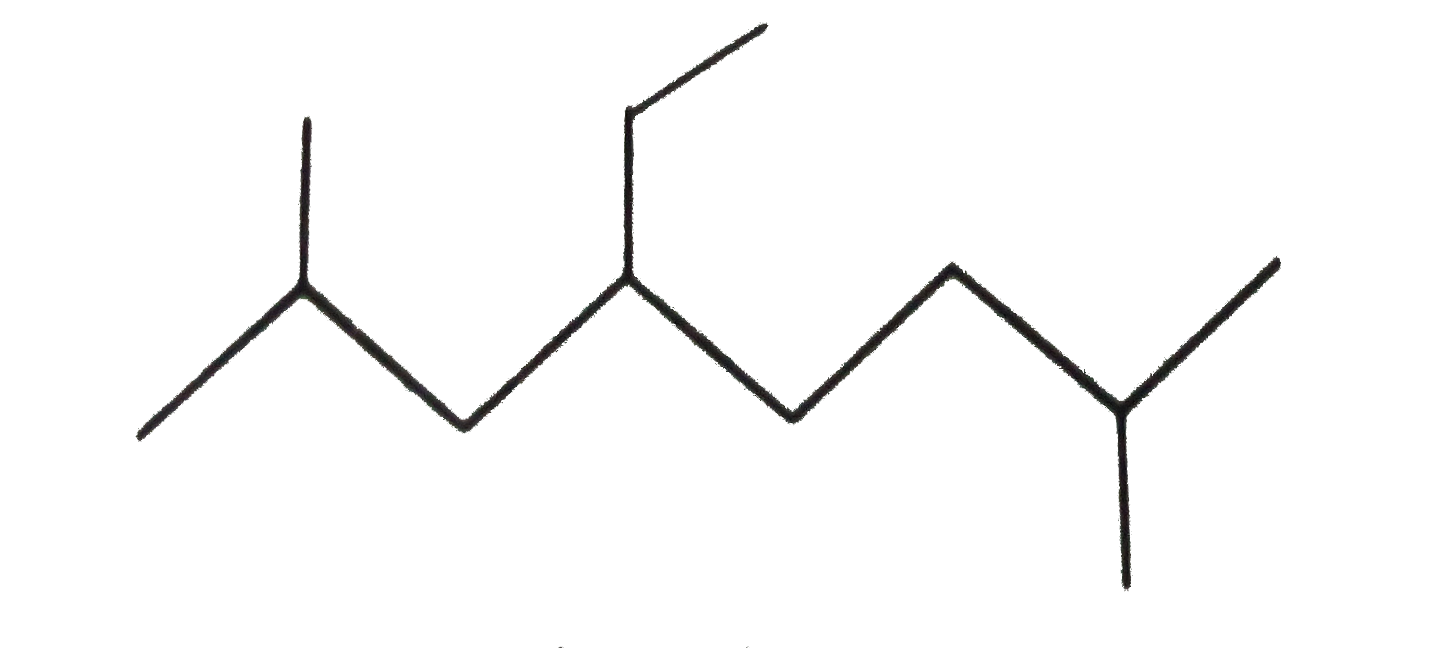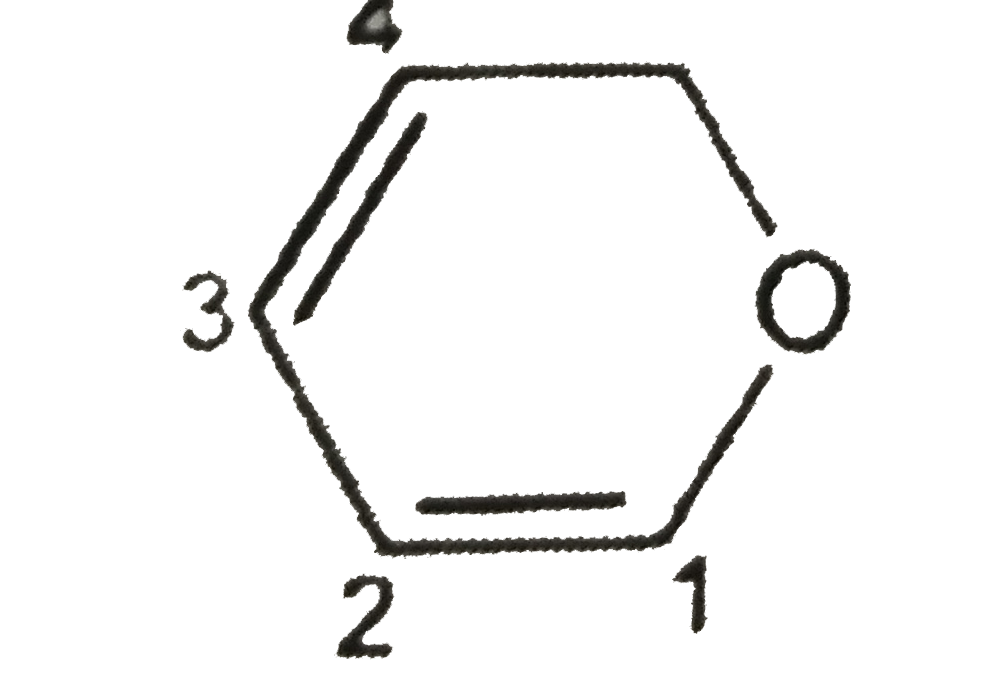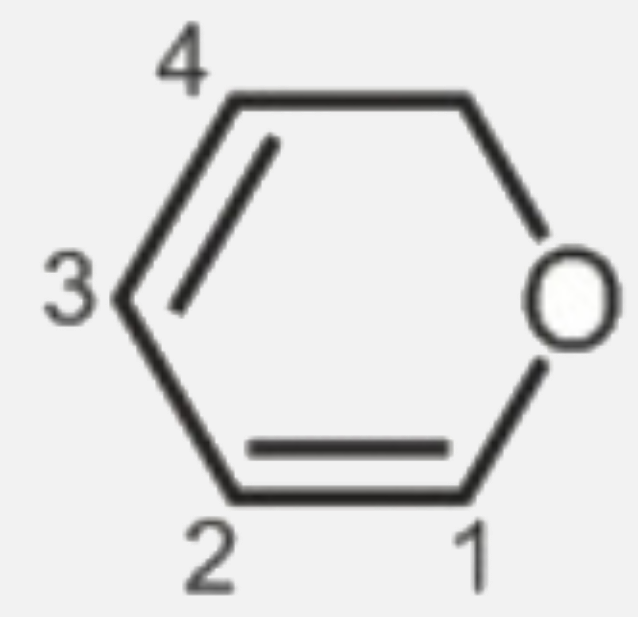The resonance effect is defined as 'the polarity produced in the molecule by the interaction of two π-bonds or between a π-bond and lone pair of electrons present on an adjacentatom.' The effect is transmitted through the chain.
In positive resonance effect, the transfer of electrons is away from an atom or substituent group attached to the conjugated system. This electron displacement makes certain positions in the molecule of high electron densities. In negative resonance effect, the transfer of electrons is towards the atom or substituent group attached to the conjugated system.
Which of the following does not show resonance effect ?
Buta-1, 3-diene
Acrylonitrile
Nitrobenzene
Isopropylisothiocyanate
The correct Answer is:D
To determine which of the given compounds does not show resonance effect, we need to analyze each compound based on the definition of resonance and the structure of the compounds.
1. Understand the Resonance Effect:
- The resonance effect involves the interaction of pi bonds or between a pi bond and a lone pair of electrons on adjacent atoms.
- Positive resonance effect (or +R effect) involves electron donation away from a substituent, while negative resonance effect (or -R effect) involves electron withdrawal towards a substituent.
2. Analyze the Options:
- Option A: Buta-1,3-diene (CH2=CH-CH=CH2):
- Structure: This compound has alternating double bonds (pi bonds) which can interact with each other.
- Resonance: The pi electrons can shift, allowing for resonance structures to form. Therefore, buta-1,3-diene shows resonance.
- Option B: Acrylonitrile (CH2=CH-C≡N):
- Structure: This compound has a double bond adjacent to a triple bond (nitrile).
- Resonance: The electronegative nitrogen can pull electron density, allowing for resonance structures. Thus, acrylonitrile also shows resonance.
- Option C: Nitrobenzene (C6H5-NO2):
- Structure: Nitrobenzene has a nitro group (-NO2) attached to a benzene ring.
- Resonance: The nitro group is an electron-withdrawing group, and resonance can occur between the pi system of the benzene and the nitro group. Therefore, nitrobenzene shows resonance.
- Option D: Isopropyl isothiocyanate (C3H7-NCS):
- Structure: This compound has an isopropyl group attached to an isothiocyanate group.
- Resonance: The arrangement of the bonds does not allow for resonance as there are no alternating double bonds or lone pairs adjacent to pi bonds. Thus, isopropyl isothiocyanate does not show resonance.
3. Conclusion:
- After analyzing all options, the compound that does not show resonance effect is Isopropyl isothiocyanate.
Final Answer:
Isopropyl isothiocyanate does not show resonance effect.
- The resonance effect involves the interaction of pi bonds or between a pi bond and a lone pair of electrons on adjacent atoms.
- Positive resonance effect (or +R effect) involves electron donation away from a substituent, while negative resonance effect (or -R effect) involves electron withdrawal towards a substituent.
- Option A: Buta-1,3-diene (CH2=CH-CH=CH2):
- Structure: This compound has alternating double bonds (pi bonds) which can interact with each other.
- Resonance: The pi electrons can shift, allowing for resonance structures to form. Therefore, buta-1,3-diene shows resonance.
- Structure: This compound has a double bond adjacent to a triple bond (nitrile).
- Resonance: The electronegative nitrogen can pull electron density, allowing for resonance structures. Thus, acrylonitrile also shows resonance.
- Structure: Nitrobenzene has a nitro group (-NO2) attached to a benzene ring.
- Resonance: The nitro group is an electron-withdrawing group, and resonance can occur between the pi system of the benzene and the nitro group. Therefore, nitrobenzene shows resonance.
- Structure: This compound has an isopropyl group attached to an isothiocyanate group.
- Resonance: The arrangement of the bonds does not allow for resonance as there are no alternating double bonds or lone pairs adjacent to pi bonds. Thus, isopropyl isothiocyanate does not show resonance.
- After analyzing all options, the compound that does not show resonance effect is Isopropyl isothiocyanate.
Isopropyl isothiocyanate does not show resonance effect.
Similar Questions
The resonance effect is defined as 'the polarity produced in the molecule by the interaction of two π-bonds or between a π-bond and lone pair of electrons present on an adjacentatom.' The effect is transmitted through the chain.
In positive resonance effect, the transfer of electrons is away from an atom or substituent group attached to the conjugated system. This electron displacement makes certain positions in the molecule of high electron densities. In negative resonance effect, the transfer of electrons is towards the atom or substituent group attached to the conjugated system.
Which of the following shows +M effect ?
View SolutionThe resonance effect is defined as 'the polarity produced in the molecule by the interaction of two π-bonds or between a π-bond and lone pair of electrons present on an adjacentatom.' The effect is transmitted through the chain.
In positive resonance effect, the transfer of electrons is away from an atom or substituent group attached to the conjugated system. This electron displacement makes certain positions in the molecule of high electron densities. In negative resonance effect, the transfer of electrons is towards the atom or substituent group attached to the conjugated system.
What is the IUPAC name for :

View SolutionThe resonance effect is defined as 'the polarity produced in the molecule by the interaction of two π-bonds or between a π-bond and lone pair of electrons present on an adjacentatom.' The effect is transmitted through the chain.
In positive resonance effect, the transfer of electrons is away from an atom or substituent group attached to the conjugated system. This electron displacement makes certain positions in the molecule of high electron densities. In negative resonance effect, the transfer of electrons is towards the atom or substituent group attached to the conjugated system.
Which of the following carboxylate ions is the most stable ?
View SolutionThe resonance effect is defined as 'the polarity produced in the molecule by the interaction of two π-bonds or between a π-bond and lone pair of electrons present on an adjacentatom.' The effect is transmitted through the chain.
In positive resonance effect, the transfer of electrons is away from an atom or substituent group attached to the conjugated system. This electron displacement makes certain positions in the molecule of high electron densities. In negative resonance effect, the transfer of electrons is towards the atom or substituent group attached to the conjugated system.
Which of the following intermediates is pyramidal in shape ?
View SolutionThe resonance effect is defined as 'the polarity produced in the molecule by the interaction of two π-bonds or between a π-bond and lone pair of electrons present on an adjacent atom.' The effect is transmitted through the chain.
In positive resonance effect, the transfer of electrons is away from an atom or substituent group attached to the conjugated system. This electron displacement makes certain positions in the molecule of high electron densities. In negative resonance effect, the transfer of electrons is towards the atom or substituent group attached to the conjugated system.
Which of the following free radicals is the most stable ?
View SolutionThe resonance effect is defined as 'the polarity produced in the molecule by the interaction of two π-bonds or between a π-bond and lone pair of electrons present on an adjacentatom.' The effect is transmitted through the chain.
In positive resonance effect, the transfer of electrons is away from an atom or substituent group attached to the conjugated system. This electron displacement makes certain positions in the molecule of high electron densities. In negative resonance effect, the transfer of electrons is towards the atom or substituent group attached to the conjugated system.
The correct statement regarding a carbonyl compound with a hydrogen atom on its alpha carbon, is
View Solution
In this molecules, π-electron density is more on :
View SolutionWhich of the following represent most effective π-bond
View Solution
In this molecules, π− electron - density is more on
View SolutionDue to screening effect of electrons in an atom
View Solution
